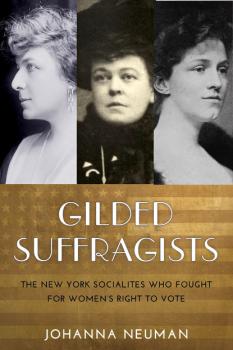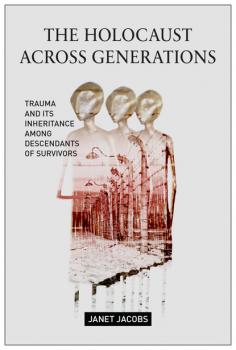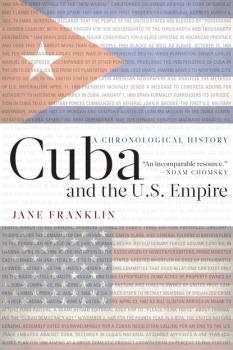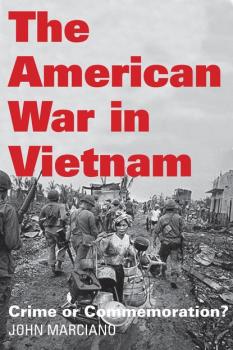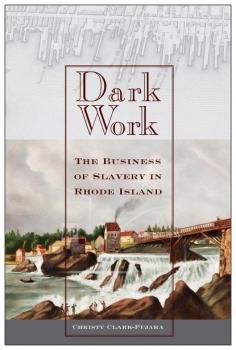ТОП просматриваемых книг сайта:
Историческая литература
Различные книги в жанре Историческая литература, доступные для чтения и скачиванияАннотация
New York City’s elite women who turned a feminist cause into a fashionable revolution In the early twentieth century over two hundred of New York's most glamorous socialites joined the suffrage movement. Their names—Astor, Belmont, Rockefeller, Tiffany, Vanderbilt, Whitney and the like—carried enormous public value. These women were the media darlings of their day because of the extravagance of their costume balls and the opulence of the French couture clothes, and they leveraged their social celebrity for political power, turning women's right to vote into a fashionable cause.Although they were dismissed by critics as bored socialites “trying on suffrage as they might the latest couture designs from Paris,” these gilded suffragists were at the epicenter of the great reforms known collectively as the Progressive Era. From championing education for women, to pursuing careers, and advocating for the end of marriage, these women were engaged with the swirl of change that swept through the streets of New York City. Johanna Neuman restores these women to their rightful place in the story of women’s suffrage. Understanding the need for popular approval for any social change, these socialites used their wealth, power, social connections and style to excite mainstream interest and to diffuse resistance to the cause. In the end, as Neuman says, when change was in the air, these women helped push women’s suffrage over the finish line.
Аннотация
The surprising alliance between Japan and pro-Tokyo African Americans during World War II In November 1942 in East St. Louis, Illinois a group of African Americans engaged in military drills were eagerly awaiting a Japanese invasion of the U.S.– an invasion that they planned to join. Since the rise of Japan as a superpower less than a century earlier, African Americans across class and ideological lines had saluted the Asian nation, not least because they thought its very existence undermined the pervasive notion of “white supremacy.” The list of supporters included Booker T. Washington, Marcus Garvey, and particularly W.E.B. Du Bois. Facing the Rising Sun tells the story of the widespread pro-Tokyo sentiment among African Americans during World War II, arguing that the solidarity between the two groups was significantly corrosive to the U.S. war effort. Gerald Horne demonstrates that Black Nationalists of various stripes were the vanguard of this trend—including followers of Garvey and the precursor of the Nation of Islam. Indeed, many of them called themselves “Asiatic”, not African. Following World War II, Japanese-influenced “Afro-Asian” solidarity did not die, but rather foreshadowed Dr. Martin Luther King’s tie to Gandhi’s India and Black Nationalists’ post-1970s fascination with Maoist China and Ho’s Vietnam. Based upon exhaustive research, including the trial transcripts of the pro-Tokyo African Americans who were tried during the war, congressional archives and records of the Negro press, this book also provides essential background for what many analysts consider the coming “Asian Century.” An insightful glimpse into the Black Nationalists’ struggle for global leverage and new allies, Facing the Rising Sun provides a complex, holistic perspective on a painful period in African American history, and a unique glimpse into the meaning of “the enemy of my enemy is my friend.”
Аннотация
Winner of the 2017 Albert J. Raboteau Book Prize for the Best Book in Africana Religions Shows how early 20th-century resistance to conventional racial categorization contributed to broader discussions in black America that still resonate today When Joseph Nathaniel Beckles registered for the draft in the 1942, he rejected the racial categories presented to him and persuaded the registrar to cross out the check mark she had placed next to Negro and substitute “Ethiopian Hebrew.” “God did not make us Negroes,” declared religious leaders in black communities of the early twentieth-century urban North. They insisted that so-called Negroes are, in reality, Ethiopian Hebrews, Asiatic Muslims, or raceless children of God. Rejecting conventional American racial classification, many black southern migrants and immigrants from the Caribbean embraced these alternative visions of black history, racial identity, and collective future, thereby reshaping the black religious and racial landscape. Focusing on the Moorish Science Temple, the Nation of Islam, Father Divine’s Peace Mission Movement, and a number of congregations of Ethiopian Hebrews, Judith Weisenfeld argues that the appeal of these groups lay not only in the new religious opportunities membership provided, but also in the novel ways they formulated a religio-racial identity. Arguing that members of these groups understood their religious and racial identities as divinely-ordained and inseparable, the book examines how this sense of self shaped their conceptions of their bodies, families, religious and social communities, space and place, and political sensibilities. Weisenfeld draws on extensive archival research and incorporates a rich array of sources to highlight the experiences of average members. The book demonstrates that the efforts by members of these movements to contest conventional racial categorization contributed to broader discussions in black America about the nature of racial identity and the collective future of black people that still resonate today.
Аннотация
Winner of the 2017 Outstanding Book Award for the Peace, War, and Social Conflict Section presented by the American Sociological Association Brings together the study of post-Holocaust family culture with the study of collective memory Over the last two decades, the cross-generational transmission of trauma has become an important area of research within both Holocaust studies and the more broad study of genocide. The overall findings of the research suggest that the Holocaust informs both the psychological and social development of the children of survivors who, like their parents, suffer from nightmares, guilt, fear, and sadness. The impact of social memory on the construction of survivor identities among succeeding generations has not yet been adequately explained. Moreover, the importance of gender to the intergenerational transmission of trauma has, for the most part, been overlooked. In The Holocaust across Generations, Janet Jacobs fills these significant gaps in the study of traumatic transference. The volume brings together the study of post-Holocaust family culture with the study of collective memory. Through an in-depth study of 75 children and grandchildren of survivors, the book examines the social mechanisms through which the trauma of the Holocaust is conveyed by survivors to succeeding generations. It explores the social structures—such as narratives, rituals, belief systems, and memorial sites—through which the collective memory of trauma is transmitted within families, examining the social relations of traumatic inheritance among children and grandchildren of Holocaust survivors. Within this analytic framework, feminist theory and the importance of gender are brought to bear on the study of traumatic inheritance and the formation of trauma-based identities among Holocaust carrier groups.
Аннотация
Beginning in the early nineteenth century, Cubans migrated to New York City to organize and protest against Spanish colonial rule. While revolutionary wars raged in Cuba, expatriates envisioned, dissected, and redefined meanings of independence and nationhood. An underlying element was the concept of Cubanidad, a shared sense of what it meant to be Cuban. Deeply influenced by discussions of slavery, freedom, masculinity, and United States imperialism, the question of what and who constituted “being Cuban” remained in flux and often, suspect. The first book to explore Cuban racial and sexual politics in New York during the nineteenth and twentieth centuries, Suspect Freedoms chronicles the largely unexamined and often forgotten history of more than a hundred years of Cuban exile, migration, diaspora, and community formation. Nancy Raquel Mirabal delves into the rich cache of primary sources, archival documents, literary texts, club records, newspapers, photographs, and oral histories to write what Michel Rolph Trouillot has termed an “unthinkable history.” Situating this pivotal era within larger theoretical discussions of potential, future, visibility, and belonging, Mirabal shows how these transformations complicated meanings of territoriality, gender, race, power, and labor. She argues that slavery, nation, and the fear that Cuba would become “another Haiti” were critical in the making of early diasporic Cubanidades, and documents how, by the late nineteenth and early twentieth centuries, Afro-Cubans were authors of their own experiences; organizing movements, publishing texts, and establishing important political, revolutionary, and social clubs. Meticulously documented and deftly crafted, Suspect Freedoms unravels a nuanced and vital history.
Аннотация
According to renowned Marxist economist Samir Amin, the recent Arab Spring uprisings comprise an integral part of a massive «second awakening» of the Global South. From the self-immolation in December 2010 of a Tunisian street vendor, to the consequent outcries in Cairo's Tahrir Square against poverty and corruption, to the ongoing upheavals across the Middle East and Northern Africa, the Arab world is shaping what may become of Western imperialism – an already tottering and overextended system. The Reawakening of the Arab World examines the complex interplay of nations regarding the Arab Spring and its continuing, turbulent seasons. Beginning with Amin’s compelling interpretation of the 2011 popular Arab explosions, the book is comprised of five chapters – including a new chapter analyzing U.S. geo-strategy. Amin sees the United States, in an increasingly multi-polar world, as a victim of overreach, caught in its own web of attempts to contain the challenge of China, while confronting the staying power of nations such as Syria and Iran. The growing, deeply-felt need of the Arab people for independent, popular democracy is the cause of their awakening, says Amin. It this awakening to democracy that the United States fears most, since real self-government by independent nations would necessarily mean the end of U.S. empire, and the economic liberalism that has kept it in place. The way forward for the Arab world, Amin argues, is to take on, not just Western imperialism, but also capitalism itself.
Аннотация
The 1959 Cuban Revolution remains one of the signal events of modern political history. A tiny island, once a de facto colony of the United States, declared its independence, not just from the imperial behemoth ninety miles to the north, but also from global capitalism itself. Cuba’s many achievements – in education, health care, medical technology, direct local democracy, actions of international solidarity with the oppressed – are globally unmatched and unprecedented. And the United States, in light of Cuba’s achievements, has waged a relentless campaign of terrorist attacks on the island and its leaders, while placing Cuba on its “State Sponsors of Terrorism” list. In this updated edition of her classic, Cuba and the United States: A Chronological History, Jane Franklin depicts the two countries’ relationship from the time both were colonies to the present. We see the early connections between Cuba and the United States through slavery; through the sugar trade; then Cuba’s multiple wars for national liberation; the annexation of Cuba by the United States; the infamous Platt Amendment that entitled the United States to intervene directly in Cuban affairs; the gangster capitalism promoted by Cuban dictator Fulgencio Battista; and the guerilla war that brought the revolutionaries to power. A new chapter updating the fraught Cuban-U.S. nexus brings us well into the 21st century, with a look at the current status of Assata Shakur, the Cuban Five, and the post-9/11 years leading to the expansion of diplomatic relations. Offering a range of primary and secondary sources, the book is an outstanding scholarly work. Cuba and the United States brings new meaning to Simón Bolívar’s warning in 1829, that the United States “appears destined by Providence to plague America with miseries in the name of Freedom.”
Аннотация
On May 25, 2012, President Obama announced that the United States would spend the next thirteen years – through November 11, 2025 – commemorating the 50th Anniversary of the Vietnam War, and the American soldiers, “more than 58,000 patriots,” who died in Vietnam. The fact that at least 2.1 million Vietnamese – soldiers, parents, grandparents, children – also died in that war will be largely unknown and entirely uncommemorated. And U.S. history barely stops to record the millions of Vietnamese who lived on after being displaced, tortured, maimed, raped, or born with birth defects, the result of devastating chemicals wreaked on the land by the U.S. military. The reason for this appalling disconnect of consciousness lies in an unremitting public relations campaign waged by top American politicians, military leaders, business people, and scholars who have spent the last sixty years justifying the U.S. presence in Vietnam. It is a campaign of patriotic conceit superbly chronicled by John Marciano in The American War in Vietnam: Crime or Commemoration?. A devastating follow-up to Marciano’s 1979 classic Teaching the Vietnam War (written with William L. Griffen), Marciano’s book seeks not to commemorate the Vietnam War, but to stop the ongoing U.S. war on actual history. Marciano reveals the grandiose flag-waving that stems from the “Noble Cause principle,” the notion that America is “chosen by God” to bring democracy to the world. Marciano writes of the Noble Cause being invoked unsparingly by presidents – from Jimmy Carter, in his observation that, regarding Vietnam, “the destruction was mutual,” to Barack Obama, who continues the flow of romantic media propaganda: “The United States of America … will remain the greatest force for freedom the world has ever known.” The result is critical writing and teaching at its best. This book will find a home in classrooms where teachers seek to do more than repeat the trite glorifications of U.S. empire. It will provide students everywhere with insights that can prepare them to change the world.
Аннотация
Tells the story of one state in particular whose role in the slave trade was outsized: Rhode Island Historians have written expansively about the slave economy and its vital role in early American economic life. Like their northern neighbors, Rhode Islanders bought and sold slaves and supplies that sustained plantations throughout the Americas; however, nowhere else was this business so important. During the colonial period trade with West Indian planters provided Rhode Islanders with molasses, the key ingredient for their number one export: rum. More than 60 percent of all the slave ships that left North America left from Rhode Island. During the antebellum period Rhode Islanders were the leading producers of “negro cloth,” a coarse wool-cotton material made especially for enslaved blacks in the American South. Clark-Pujara draws on the documents of the state, the business, organizational, and personal records of their enslavers, and the few first-hand accounts left by enslaved and free black Rhode Islanders to reconstruct their lived experiences. The business of slavery encouraged slaveholding, slowed emancipation and led to circumscribed black freedom. Enslaved and free black people pushed back against their bondage and the restrictions placed on their freedom. It is convenient, especially for northerners, to think of slavery as southern institution. The erasure or marginalization of the northern black experience and the centrality of the business of slavery to the northern economy allows for a dangerous fiction—that North has no history of racism to overcome. But we cannot afford such a delusion if we are to truly reconcile with our past.

